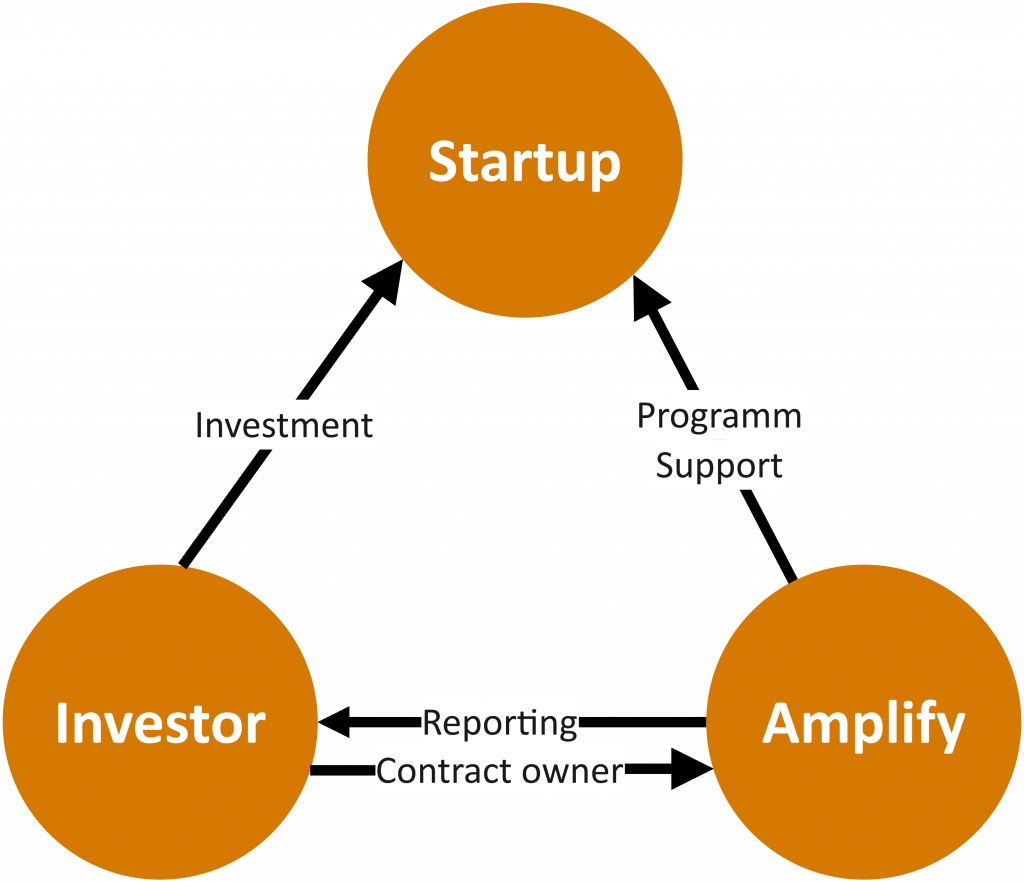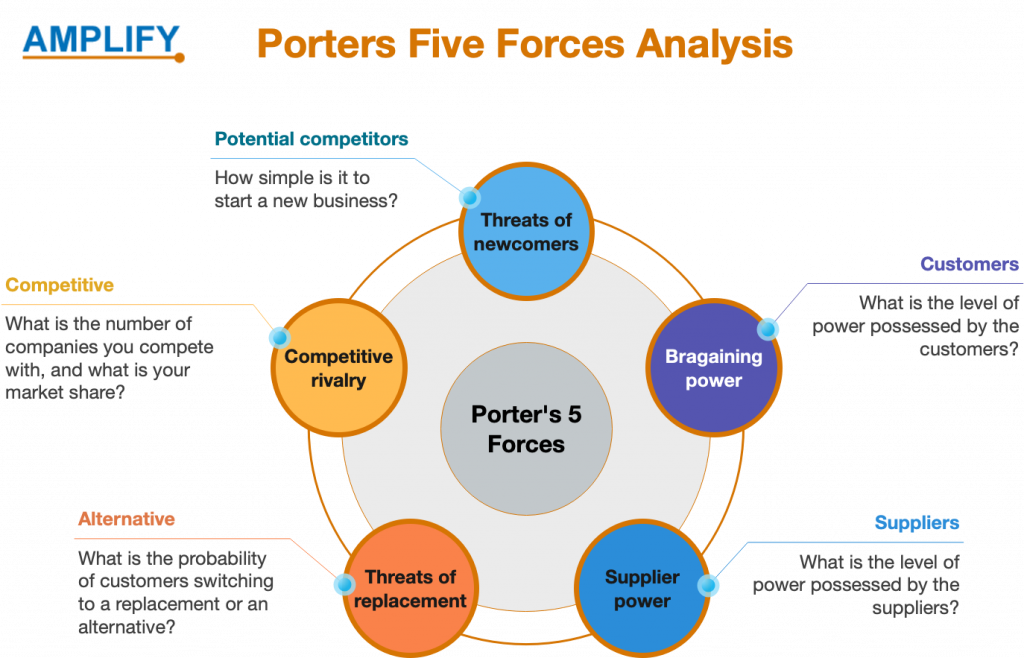Establishing a US entity
Navigating Your US Business Journey
Embark on a fruitful business venture in the US with Amplify, your dependable guide for navigating the terrain of limitless possibilities. Are you prepared to explore establishing a US entity? Dive in as we unravel strategies for launching your business in the USA
Your Ally in Establishing a US Entity
Amplify stands firmly beside entrepreneurs and companies aspiring to weave their success stories in the US. We dedicate ourselves to empowering your business, assuring you step into a realm of opportunities with confidence and compliance. What does it mean to successfully create a US entity?
Unlocking Opportunities in the US Market
Your path to establishing a US entity comes with its unique set of challenges and opportunities. We envelop you with the latest information, practical advice, and a treasury of resources, aligning your strategies with the dynamic US market. Can your business find its strong footing and thrive amidst the myriad of possibilities?
Comprehensive Guidance Through Every Step
From legal and regulatory dimensions to financial, market-entry, and operational facets, we mirror your aspirations with our robust understanding. Amplify ensures that your venture into establishing a US entity not only complies with the regulations but also strategically aligns with the multifaceted US market dynamics. How can our profound knowledge of the American market navigate your business toward success?
Nurturing Your US Business with Amplify
Embark on your US entrepreneurial journey with Amplify, a staunch ally in ensuring that the complexities of procedures and compliances become a seamless journey. Together, let’s carve out your success story in the US, solidifying your business presence and nurturing its growth. How does Amplify transform the complex into the achievable in your venture?
Where Your US Entity and Success Intersect
Step into a future where your US entity blossoms into a symbol of success and sustainability. With Amplify, navigate through the intricate process of establishing a US entity, ensuring that every step you take is rooted in compliance, knowledge, and strategic alignment with the vast opportunities the US market unfurls. Are you ready to script your American success story with us?

Business Models
Affiliate marketers promote and sell items and services for merchants to earn commissions.
The affiliate marketing business model is a strategy in which individuals or companies (affiliates) earn commissions by promoting and selling products or services on behalf of another company (merchant). It operates on the basis of a mutually beneficial partnership, where the affiliate drives traffic and leads to the merchant’s website, and in return, receives a commission for each successful referral or sale.In affiliate marketing, affiliates typically join affiliate programs offered by merchants or affiliate networks. They receive unique tracking links or codes that they use to promote the merchant’s products or services through various channels such as websites, blogs, social media, email marketing, or online advertising. When a user clicks on the affiliate’s link and makes a purchase or completes a desired action (such as filling out a form or signing up for a service), the affiliate earns a commission based on a predetermined percentage or a fixed amount.
The affiliate marketing business model can be beneficial for various parties involved in the online marketplace:
Merchants: Companies or individuals who have products or services to sell
Affiliates: Individuals, bloggers, content creators, influencers, and website owners
Consumers: Affiliate marketing can benefit consumers by providing them with reviews, and access to products or services
Affiliate Networks: These platforms act as intermediaries, connecting merchants with affiliates providing tracking, and payment systems
The affiliate marketing model benefits both affiliates and merchants.
One of the key advantages of the affiliate marketing model is that it allows individuals or businesses to monetize their online presence and audience without the need to create their own products or services. Affiliates can choose from a wide range of products or services in various niches, selecting those that align with their target audience and interests.The affiliate marketing model benefits both affiliates and merchants. Affiliates have the opportunity to generate income based on their marketing efforts, without the need for inventory, customer service, or product fulfillment. Merchants, on the other hand, benefit from increased exposure, expanded reach, and potential sales or leads generated by the affiliates’ promotional efforts.
Summary
Overall, the affiliate marketing business model provides a win-win situation for affiliates and merchants, allowing individuals or businesses to earn passive income by promoting products or services they believe in, while merchants can leverage the marketing efforts of affiliates to drive sales and expand their customer base.
The Amazon Affiliate Program (also known as Amazon Associates), Commission Junction, ShareASale, and ClickBank are just a few examples of businesses that make use of the affiliate marketing business model. These platforms connect affiliates with a wide variety of merchants and provide the tools and resources required to track referrals, manage commissions, and maximize performance. Affiliates can use these platforms to connect with merchants.
The agency-based business model refers to a business structure where a company acts as an intermediary or representative between clients and various service providers
The term “agency-based business model” refers to a business structure in which a company acts as an intermediary or representative for several different service providers on behalf of its clients. The agency acts as a go-between for its clients, easing the process of transactions and providing them with specialized services tailored to their requirements. The following is a list of essential components that make up the agency-based business model:
Representation of the Client: Agencies are responsible for representing their clients and working on their behalf to locate and acquire services from third-party providers. They ensure that clients and service providers can effectively communicate with one another and work together by acting as a bridge between the two parties.
Network of Service Providers: In most cases, advertising agencies will keep in place a network of service providers or freelancers who specialize in various fields. They take advantage of this network to provide their customers with a comprehensive selection of services, catering to a wide variety of requirements such as marketing, design, development, consulting, and many more.
The agency-based business model is ideal for small and medium-sized businesses, startups,
professionals, companies expanding into new markets, and enterprises with complex needs.
Project Management: Agencies typically take charge of the project management aspect, coordinating between clients and service providers the various tasks, timelines, and deliverables. They make sure that projects are carried out in a streamlined and effective manner, following the prerequisites and requirements of the clients.
Expertise Specializing in a Particular Field Agencies brings to the table a wealth of knowledge and experience specializing in a particular field. They are knowledgeable of the competitive landscape, current on industry developments, and able to offer clients insights and recommendations. Clients are better able to achieve their objectives and make decisions based on accurate information as a result of this expertise.
Management of Client Relationships: The primary focus of agencies is establishing and maintaining healthy client relationships. To cultivate lasting business relationships, they place a premium on ensuring the happiness of their customers, demonstrating an awareness of their requirements, and providing services of the highest possible standard.
Fee-based Revenue Model: Agencies generate revenue by charging fees or commissions based on the services provided. These fees may be structured as a percentage of the project cost, a flat fee, or a retainer-based arrangement, depending on the nature of the services and the agreement with the client.
The Cash machine business model is a strategy that operates to generate consistent cash flow
The “Cash machine business model” focuses on maximizing revenue and profitability through various means.
One key aspect of this model is the acquisition of assets that generate continuous income, such as rental properties, dividend-paying stocks, or revenue-generating businesses. Moreover, the model emphasizes efficiency and cost control to optimize cash flow. The Cash machine business model involves minimizing expenses, streamlining operations, and maximizing the return on investment.
The cash machine business model is particularly suitable for businesses that offer products or services with recurring revenue streams.
Examples of successful companies that demonstrate the Cash machine business model are Amazon, Alibaba, and Apple
Diversification to mitigate risks
Furthermore, the “Cash machine business model” often involves diversification to mitigate risks and enhance stability. By investing in multiple income-generating assets or businesses, the model aims to create a diversified portfolio that can withstand market fluctuations. Additionally, this model prioritizes long-term sustainability over short-term gains. It focuses on building a solid foundation and maintaining a steady income stream rather than pursuing quick but potentially volatile profits.
Disciplined financial management.
Moreover, the “Cash machine business model” requires disciplined financial management. It involves careful budgeting, strategic cash flow planning, and prudent investment decisions to ensure consistent revenue generation.
Lastly, this model encourages continuous improvement and adaptation. It involves monitoring market trends, identifying new opportunities, and adjusting strategies to stay relevant and maximize cash flow in changing business landscapes.
Summary
The “Cash machine business model” revolves around generating consistent cash flow through an asset acquisition, cost control, diversification, sustainability, disciplined financial management, and adaptability.
This type of business model is ideal for inventory-based companies.
A prominent example of a company utilizing the “Cash machine business model” is Coca-Cola. With a vast portfolio of beverage brands and a global distribution network, Coca-Cola generates consistent cash flow through its sales of carbonated drinks, bottled water, juices, and other beverages. The company’s focus on efficient operations, cost control, and brand recognition enables it to maximize profitability and maintain a steady income stream. Coca-Cola’s disciplined financial management and ability to adapt to changing market demands have positioned it as a successful practitioner of the “Cash machine business model” in the beverage industry.
The consulting business model offers clients expert advice, guidance, and specialized services to solve problems, improve performance, or achieve goals.
To put it simply, the consulting business model entails providing clients with expert advice, direction, and specialized services in order to assist those clients in solving specific problems, improving their performance, or achieving particular objectives. Consultants make use of their knowledge, expertise, and experience in order to provide clients with useful insights and recommendations regarding strategic moves. The term “consulting” can refer to a wide variety of different specializations, including “management consulting,” “financial consulting,” “IT consulting,” “marketing consulting,” and many others. The consulting process involves close collaboration between the consultant and the client to gain an understanding of the client’s particular requirements and difficulties, the conduct of research and analysis, the development of individualized solutions, and the provision of ongoing support and guidance all the way through the implementation phase.
The consulting business model is an excellent way to charge your clients if you are a subject matter expert (SME)
in a field and the duration of the project is uncertain (due to changes in client requirements).
Working on a project basis
Consultants typically work on a project basis, where they are hired for a specific duration or scope of work. They may collaborate with clients in various ways, including conducting assessments, developing strategies, implementing changes, providing training, or offering ongoing advisory services.The consulting business model offers several benefits to both consultants and clients. For clients, it provides access to specialized expertise and external perspectives, enabling them to overcome challenges, make informed decisions, and achieve their objectives. Consultants, on the other hand, have the opportunity to apply their knowledge and skills in diverse industries and work with a variety of clients, which can lead to professional growth and new opportunities.
Summary
The consulting business model involves providing specialized services and expert advice to clients, helping them solve problems and achieve their goals. Consultants leverage their expertise to offer valuable insights, customized solutions, and ongoing support. This model benefits both consultants and clients, with consultants gaining professional growth and clients accessing specialized knowledge. Popular consulting firms include McKinsey & Company and Deloitte Consulting
Some examples of well-known consulting firms include:
- McKinsey & Company: A global management consulting firm known for providing strategic and operational advice to businesses across various industries.These consulting firms have established reputations and work with clients worldwide, providing valuable insights and solutions to help businesses navigate challenges and drive growth.
- Boston Consulting Group (BCG): A leading management consulting firm that offers expertise in areas such as strategy, operations, technology, and corporate development.
- Deloitte Consulting: A multinational professional services firm that provides a wide range of consulting services, including strategy, technology, human capital, and financial advisory.
- Bain & Company: A management consulting firm that specializes in helping companies with strategy, mergers and acquisitions, organizational design, and performance improvement.
- Accenture: A global consulting and professional services company that offers services in areas such as digital transformation, technology consulting, and operations.
- PricewaterhouseCoopers (PwC): A professional services network that provides consulting services in areas such as management consulting, technology consulting, and risk management.
These consulting firms have established reputations and work with clients worldwide, providing valuable insights and solutions to help businesses navigate challenges and drive growth.
The direct sales business model refers to a strategy in which a company sells its products or services directly to consumers without relying on traditional retail channels
The term “direct sales business model” refers to a strategy wherein a company sells its products or services directly to consumers without relying on traditional retail channels as part of its distribution network. This model is used in the context of selling a company’s products or services. The company establishes a direct relationship with its customers and conducts sales through a variety of methods including in-person presentations, home parties, online platforms, and social selling rather than distributing its products through intermediaries such as wholesalers or retailers. This allows the company to save money on distribution costs. Independent sales representatives, who are also sometimes referred to as distributors or consultants, are an important cog in the direct sales model’s wheel. These representatives are typically people who join the company as independent contractors and earn commissions or bonuses based on their sales performance. They are given the opportunity to do so when they sign on with the company. They are the public face of the company and are responsible for promoting and selling the company’s goods or services to individual customers.
Personalized customer interactions
This approach to running a business provides a number of benefits. To begin, it makes it possible to have personalized interactions and demonstrations with customers. This enables customer service representatives to provide in-depth product knowledge, respond to questions, and offer a customized experience. Second, direct sales companies frequently offer their representatives comprehensive training, support, and marketing materials. This gives their representatives the ability to create their own businesses and earn money based on the success of those businesses. The direct sales model is widely used in a variety of industries, including the cosmetics industry, the wellness industry, the household goods industry, and the home decor industry, amongst others. Companies such as Avon, Tupperware, Amway, and Mary Kay are all examples of businesses that utilize the direct sales business model. These businesses are dependent on a network of independent sales representatives who cultivate relationships with clients, give product demonstrations, and earn commissions on the sales they make.
Summary
Overall, the direct sales business model allows companies to bypass traditional retail channels and establish a direct connection with customers through independent sales representatives. It provides individuals with an opportunity to start their own business, earn income based on their sales performance, and offers consumers a personalized buying experience.
Herbalife is a good illustration of a business that operates on the basis of the direct sales business model. Herbalife is a multinational company that specializes in nutrition counseling and weight management. The company’s products are distributed directly to end users by a network of independent distributors.
Another example is Pampered Chef is a company that sells kitchen tools, cookware, and food products of a very high quality. They rely on a network of independent consultants who bring cooking shows and demonstrations directly to the homes of potential customers. During these events, the consultants showcase the company’s products and offer customers advice on how to prepare them.
The franchise model is a business arrangement in which one party, known as the franchisor, grants the rights to another party, known as the franchisee, to operate a business using its established brand, systems, and processes.
The franchise model allows the franchisee to leverage the proven business model and brand recognition of the franchisor while maintaining a certain level of independence as a business owner. In a franchise model, the franchisor provides the franchisee with the necessary support, training, and resources to establish and operate a business under its brand. The model provides access to trademarks, proprietary products or services, marketing materials, operational guidelines, and ongoing support. The franchisee, in return, pays an initial franchise fee and ongoing royalties or fees to the franchisor, typically based on a percentage of their revenue. This payment structure allows the franchisor to generate income and maintain control over the franchise network.
Key features of the franchise model include:
- Brand recognition: Franchisees benefit from the established brand reputation and customer base associated with the franchisor’s brand, which can help attract customers and build credibility.
- Standardized systems and processes: Franchise systems typically have standardized operating procedures, ensuring consistency in products, services, and customer experience across franchise locations.
- Training and support: Franchisors provide initial training and ongoing support to franchisees, helping them understand and implement the business model effectively.
- Marketing and advertising: Franchise systems often have centralized marketing and advertising efforts, allowing franchisees to benefit from national or regional campaigns to promote their businesses.
- Shared resources: Franchisees can access shared resources, such as bulk purchasing power, collective knowledge, and best practices, leading to cost efficiencies and improved operational effectiveness.
The franchise model offers several advantages, such as a proven business concept, brand recognition, and ongoing support from the franchisor. However, franchisees must comply with the franchisor’s guidelines and operating standards, limiting their flexibility and autonomy compared to starting an independent business. It’s essential for both franchisors and franchisees to carefully evaluate the terms of the franchise agreement, conduct thorough due diligence, and ensure a good fit between their respective goals and expectations before entering into a franchise relationship.
McDonald’s is a prime example of a company that operates using the franchise model. As a franchisor, McDonald’s grants the rights to aspiring entrepreneurs (franchisees) to operate their own McDonald’s restaurant under the established brand and business systems. Franchisees benefit from leveraging McDonald’s recognized brand, established operational processes, and ongoing support. In return, franchisees pay initial franchise fees, ongoing royalties, and contribute to national marketing efforts. This mutually beneficial relationship allows McDonald’s to expand its presence globally while providing individuals with an opportunity to run their own business under a well-known brand.
The Freemium business model is a strategy that combines elements of free and premium offerings to attract and monetize a user base.
In this model, companies provide a basic version of their product or service for free, enticing users to try and adopt it.
Moreover, the basic version serves as a marketing tool, creating awareness and generating interest in the product or service.
Transitioning to the premium aspect, companies offer additional features, functionality, or enhanced experiences that come at a cost.
The premium offerings are designed to cater to users who desire more advanced or specialized features beyond what the free version provides.
Zoom, Dropbox, MailChimp, and Evernote are examples.
Using a large user base as support
Additionally, the “Freemium business model” relies on a large user base to drive revenue. By offering a free version, companies can attract a broader audience, expanding their reach and potential customer pool.
Companies employing this model use various strategies to convert free users into paying customers. For instance, they may utilize upselling techniques, where free users are enticed to upgrade to a premium version through exclusive benefits or discounts. Moreover, companies may leverage data and analytics from free users to personalize offers and target marketing campaigns effectively.
Careful balancing between the free and premium
The “Freemium business model” requires careful balancing between the free and premium aspects to ensure profitability. Companies need to strike a balance where the free version provides enough value to attract and retain users. In contrast, the premium version offers additional benefits worth paying for.
Lastly, the “Freemium business model” fosters a freemium ecosystem where free users benefit from basic functionality. In contrast, premium users enjoy enhanced features and support.
Summary
The “Freemium business model” combines free and premium offerings to attract and monetize a user base. It leverages a large user base, conversion strategies, data analytics, and careful balancing to drive revenue and foster a freemium ecosystem.
It is a great way to encourage customers to test out the software or application.
One notable company that adopts the Freemium business model is Spotify. Spotify offers a free version of its music streaming service, allowing users to access a vast library of songs with occasional advertisements. To monetize its user base, Spotify also offers a premium subscription option that provides ad-free listening, offline playback, higher audio quality, and additional features. The free version acts as a funnel to attract a large user base, while the premium version caters to users seeking an enhanced music streaming experience. This Freemium approach has been instrumental in Spotify’s success, allowing it to establish a massive user base and convert a significant portion of free users into paying subscribers.
The give them fries they come for the burger business model is a strategy where a company offers a low-margin or even loss-leading product as a means to attract customers.
The primary product, often sold at a discounted or inexpensive price, acts as a “hook” to draw customers in. Once customers are engaged and interested, the company generates profits by upselling or cross-selling complementary or higher-margin products.The concept behind this business model is that by offering an appealing or enticing product at an attractive price point, customers are more likely to make a purchase and establish a connection with the brand. Once they are invested or loyal, the company can leverage that relationship to sell additional products or services at higher profit margins.
A initial low-margin product (fries) serves as a way to attract customers
The analogy of “give them fries they come for the burger” refers to the idea that the initial low-margin product (fries) serves as a way to attract customers, and once they are in, they are more likely to purchase the main, higher-margin product (burger) and potentially other items.This model relies on the understanding that customers tend to be more willing to spend additional money after they have already made a purchase or are engaged with a brand. It capitalizes on the concept of customer lifetime value, aiming to maximize the long-term profitability of each customer relationship.
Companies implementing this strategy carefully analyze their product offerings to identify the optimal combination of low-margin and high-margin products that will drive customer acquisition, retention, and profitability. By effectively executing this business model, companies can generate increased sales, customer loyalty, and ultimately, improved profitability.
Fast food chains like McDonald’s are a good example of companies that use the business model “give them fries; they come for the burger.” In this model, customers are enticed to the establishment by the promise of additional side items. McDonald’s provides customers with the opportunity to purchase value meals, which include a burger, fries, and a drink, all for a bundled price that is frequently set at an attractive price point. The burger is the primary offering, while the fries are more of an accessory item to go along with the meal. McDonald’s encourages customers to make a purchase and develop a relationship with their brand by including an incentive in the form of a discounted or low-margin bundle of goods.
The hidden revenue business model refers to a strategy where a company generates income from sources that are not immediately apparent or visible to the customer
The hidden revenue business model is a strategy where a company generates income from sources that are not immediately apparent or visible to the customer. It involves identifying and leveraging additional revenue streams beyond the primary source of revenue.
Google, Facebook, Instagram, and Twitter are several examples.
Monetize business beyond the sale of products
In this model, companies explore alternative ways to monetize their business beyond the sale of products or services. They often tap into existing customer relationships, data, or assets to unlock hidden opportunities for generating profit.One common example of hidden revenue is through advertising. Companies may partner with advertisers to display ads on their platforms or websites, generating revenue based on the number of impressions or clicks.
Data sold anonymized to third parties
Another source of hidden revenue is data monetization. Companies collect and analyze customer data to gain insights or sell anonymized data to third parties for market research or targeted advertising purposes.Additionally, companies may engage in affiliate partnerships where they earn commissions for referring customers to other businesses or products.
Licensing fees are another form of hidden revenue, where companies license their intellectual property or technology to other companies in exchange for royalties or fees.Upselling is also a strategy employed in the hidden revenue model, where companies offer additional products or services to existing customers, increasing the average transaction value and revenue per customer.
The hidden revenue business model allows companies to diversify their income streams, reduce reliance on a single source of revenue, and maximize the value derived from existing resources and customer relationships.It is important for companies to carefully balance their hidden revenue initiatives with maintaining a positive customer experience and ensuring transparency to build trust with their customer base.By adopting the hidden revenue business model, companies can unlock untapped potential for revenue generation and increase their overall financial stability and success.
Google is a good example of a company that uses the business model of having hidden revenue streams. Although Google’s advertising platform is its primary source of revenue, the company also generates other, less obvious sources of revenue through a variety of different channels. For instance, Google collects user data from its search engine, email service, and other products in order to provide personalized advertisements and insights to advertisers. This practice is known as data monetization. In addition, Google provides cloud computing services, known as Google Cloud, for which the company charges fees for storage, processing, and other services. This generates an additional revenue stream for Google. Google also generates revenue by licensing its Android operating system to companies that make smartphones. This revenue comes from licensing fees and apps that come pre-installed on the devices. Google is able to maintain a strong financial position and diversify its income streams thanks to these unpublicized sources of revenue.
The multi-brand business model refers to a strategic approach where a company operates multiple distinct brands under its umbrella
The following is an explanation of the business model known as multi-brand:
Brand Diversity: A business that uses a multi-brand model creates and manages multiple brands, each with its own distinct identity, positioning, and target market. These brands may serve a variety of customer demographics, provide a wide range of goods and services, or are active in various business sectors.
Market Segmentation: The objective of adopting a multi-brand strategy is to target a market’s various subsets through market segmentation more effectively. By developing several distinct brands, the company will be able to cater its products and services to the specific requirements, preferences, and demographics of its target audience, thereby expanding its market reach and potential.
Autonomy of the Brand: In a multi-brand model, each brand is allowed some degree of independence in its operations, allowing it to preserve its unique brand identity, brand messaging, and brand experience. Because of this, it is possible to customize and specialize the product by the target market and the brand’s positioning.
The multi-brand business model is suitable for companies that aim to target diverse customer segments, offer a range of products or services with unique brand identities, and capitalize on market opportunities in various industries or geographic regions
Synergies and Economies of Scale: Even though each brand runs its own business, the company can still reap the benefits of synergies and economies of scale because of its combined operations. It is possible to increase productivity and cost-effectiveness across all brands by leveraging shared resources. These shared resources include back-end operations, supply chains, marketing expertise, and research and development
Management of the Portfolio: The company is responsible for strategically managing its portfolio of brands, which includes monitoring their performance, the dynamics of the market, and the competitive landscape. It includes making decisions regarding the acquisition of new brands, the sale of existing brands, the extension of existing brands, or the repositioning of existing brands to maximize market opportunities and optimize the overall portfolio of brands.
The reputation of the Brand and Trust: The multi-brand business model depends on the establishment and upkeep of solid reputations for each of the individual brands to be successful. To cultivate customer loyalty and differentiate itself from other brands, each company needs to keep its promises, give its customers something of value, and earn their trust.
Market Expansion: The multi-brand model can also facilitate market expansion by allowing the company to enter new geographic locations, target new customer segments, or diversify into new product or service categories. That is all possible because the model allows multiple brands to be sold under the same umbrella. Because of this, the company can secure a more significant portion of the market and reduce the risks of being dependent on a single brand.
Examples of companies that employ the multi-brand business model include Procter & Gamble, which operates numerous brands across various consumer product categories, such as Pampers, Gillette, and Tide. Another example is Volkswagen Group, which manages a portfolio of automotive brands, including Volkswagen, Audi, Porsche, and Lamborghini.
The multi-sided platform model, also known as the business model that connects multiple distinct user groups, facilitates interactions and creates value among them
This concept creates mutual benefits for its users by connecting together distinct user segments. Because of this interdependence, a network effect is created, in which an increase in the number of users results in a rise in the overall value of the platform.
Examples: LinkedIn
Common examples of multi-sided platforms include:
- E-commerce marketplaces: Platforms connecting buyers and sellers, allowing transactions to occur. The platform benefits from increased product offerings, while buyers benefit from a wide selection and sellers gain access to a more extensive customer base.
- Ride-hailing apps: Platforms that connect passengers with drivers, providing transportation services. Passengers benefit from convenient rides; drivers earn income, and the platform benefits from facilitating these transactions.
- Social media platforms: Platforms that connect users, allowing them to share content, interact, and communicate with each other. Users benefit from social connections and content sharing, while the platform generates revenue through advertising or premium features.
- Payment gateways: Platforms that facilitate transactions between buyers and sellers by providing secure payment processing services. Both buyers and sellers benefit from a reliable and convenient payment solution.
Key characteristics of the multi-sided platform model include:
- Network effects: The platform’s value increases as more users join and engage, creating a positive feedback loop.
- Cross-side subsidies: One side of the platform may receive subsidized or free access while the other pays to incentivize participation and achieve critical mass.
- Balancing interests: The platform must balance the needs and interests of multiple user groups to ensure a positive experience for all sides.
- Platform governance: The platform sets rules, policies, and standards to facilitate interactions, ensure trust, and maintain the platform’s integrity.
Successful implementation of the multi-sided platform model requires careful consideration of user needs, effective matchmaking or connection mechanisms, and strategies to attract and retain users on multiple sides. By facilitating interactions and creating value for different user segments, multi-sided platforms can achieve rapid growth and sustainable business success.
A notable example of a company utilizing the multi-sided platform model is Airbnb. By connecting travelers seeking accommodations with hosts who have available spaces, Airbnb facilitates interactions and transactions between two distinct user groups. The platform benefits from increased listings and diverse accommodation options, while travelers gain access to unique and affordable accommodations worldwide. Airbnb’s success relies on the interdependency and value creation among its multiple sides, demonstrating the effectiveness of the multi-sided platform model in the hospitality industry.
The “one-for-one business model” is a type of marketing strategy that is based on the idea of donating money, goods, or services to people who are less fortunate than the purchaser of each individual item.
In this business model, the company makes a donation of an item or service of equal value to a person or community that is less fortunate for each and every purchase that is made by a customer. In addition, the “One-for-one business model” seeks to address societal or environmental issues by generating a positive impact through the primary activities of a company’s business operations in an effort to find solutions. In addition to this, the model frequently places an emphasis on finding solutions to particular problems, such as eradicating poverty or improving access to education, healthcare, clean water, or environmental protection.
In their respective industries, companies such as TOMS, Warby Parker, Lush, and Soapbox have effectively embraced the “One-for-one business model.”
Openness and accountability
The “One-for-one business model” also emphasizes openness and accountability, ensuring that promised gifts or contributions reach the intended recipients. This strategy also often works with nonprofit organizations or other partners to choose and carry out charitable initiatives. The “One-for-one business model” also appeals to socially conscious shoppers who want to make a difference and support companies with a strong social mission. Customers like socially responsible companies. Businesses that employ this strategy also use communication and storytelling to educate their target audiences on how their customers’ purchases affect philanthropic recipients. One-for-one exchanges also empower customers by showing them how their purchases affect the globe.
Summary
In summary, the “One-for-one business model” operates on the principle of giving back, addresses social or environmental challenges, emphasizes transparency and accountability, collaborates with nonprofits, resonates with socially conscious consumers, creates empowerment, finds application in various industries, and aligns business objectives with social impact.
TOMS is a prominent example of a company that has successfully implemented the one-for-one business model. TOMS is a footwear brand that was a leader in the development of this concept through its “One for One” initiative. TOMS will give a child in need a new pair of shoes for every pair of shoes that are purchased from the company. This initiative tackles the problem of insufficient footwear in economically disadvantaged communities, and it has had a significant effect all over the world. In further demonstration of the “one-for-one” philosophy, TOMS has broadened the scope of its charitable contributions to include not only shoes but also eyewear, clean water, and maternal health products. TOMS has not only created a compelling story that resonates with customers who are looking to make a difference with their purchases but has also provided concrete assistance to those who are in need as a result of the business model that it employs.
The Peer-to-peer business model is a strategy that revolves around enabling direct transactions and interactions between individuals or peers.
In this model, participants can engage in activities such as sharing resources, offering services, and exchanging goods without the need for intermediaries. In addition, the “Peer-to-Peer business model” utilizes technology platforms or marketplaces to facilitate peer-to-peer transactions. In addition, the model fosters a sense of community and trust among participants through their direct interactions and transactions.
Airbnb, Uber, eBay, Offerup, and Freelancer.com are some examples.
Utilizing content generated by users
In addition, the “Peer-to-Peer business model” frequently relies on user-generated content or contributions to create value and a thriving ecosystem. In addition, this model typically provides advantages such as cost savings, increased convenience, and access to a vast selection of offerings. Moreover, the “Peer-to-Peer business model” is frequently associated with collaborative consumption, in which individuals can access and use underutilized resources or services from their peers.
Encouraging sustainability and the efficient use of resources
By promoting sharing and waste reduction, the model promotes sustainability and the efficient use of resources. In addition, participants in a peer-to-peer marketplace frequently have the option of setting their own prices or negotiating terms directly with other participants, allowing for a degree of flexibility and customization. Lastly, the “Peer-to-Peer business model” has gained significant popularity in a variety of industries, including transportation (e.g., Uber), lodging (e.g., Airbnb), and crowdfunding (e.g., Kickstarter).
Summary
The “Peer-to-peer business model” facilitates direct transactions and interactions between individuals, leveraging technology platforms, fostering community, relying on user-generated content, offering cost savings and convenience, promoting sustainability, enabling customization, and finding application in diverse industries.
The following are some additional examples of businesses that operate using the peer-to-peer business model:
Uber is a transportation network company that operates a platform that connects riders with drivers who provide transportation services using their own personal vehicles. A peer-to-peer transportation network is established as a result of the ability of individuals to make ride requests and pay for the rides directly to the driver.
TaskRabbit is a platform that connects people who need assistance with a variety of tasks and chores with individuals who are able to provide those services to the people who need assistance. It gives users the ability to post tasks and receive bids from “Taskers” who are available and who are able to complete the tasks that have been requested.
Etsy is an online marketplace that enables individuals to sell handmade crafts, vintage items, and other one-of-a-kind goods directly to buyers. Etsy is known by its acronym, Etsy. It grants merchants and artisans the ability to showcase their wares and conduct business directly with end users via peer-to-peer transactions.
Turo is a peer-to-peer car rental platform that enables individuals to rent out their personal vehicles to other people. Turo is also known as “Turo.” It enables direct interactions and transactions between car owners and renters, which provides a convenient alternative to the conventional car rental services that are currently available.
These examples demonstrate the diverse applications of the peer-to-peer business model across various industries, providing individuals with opportunities to engage in direct transactions and leverage their resources or skills to generate income or access services.
The razor and blade business model is a strategy where a company sells a primary product,
known as the “razor,” at a low or even subsidized price.
King C. Gillette, founder of Gillette, popularized the razor and blade business model
by selling a durable razor at cost and premium disposable blades.
The razor and blade business model is a strategy where a company sells a primary product, also known as the “razor,” at a low or even subsidized price in order to drive sales of additional products, which are known as “blades.” This first product acts as a platform for customers to use or a point of entry for them. After the consumer has purchased the razor, they will need to buy additional products, which are referred to as the “blades,” in order to use it properly. Consumable goods like these blades help the company maintain a steady stream of income because customers continue to buy them.
Creating a long-term relationship with customers
The model operates on the principle of creating a long-term relationship with customers by selling the initial product at a lower cost, sometimes even at a loss, to establish a customer base. Once customers are locked into the platform, they become dependent on purchasing the compatible blades or accessories, which are priced at a higher margin to ensure profitability.This model leverages the concept of “lock-in” or customer loyalty, as customers are unlikely to switch to another brand due to the compatibility requirement.
Drive demand by ongoing innovation
In addition, the business model for razors and blades frequently includes continuous research and development, as well as enhancements to existing products, in order to boost demand for the primary product and guarantee continued sales of the blades. The goal of businesses that use this business model is to generate consistent revenue and recoup their initial investment through the sale of blades or other products that complement their core offering. In addition, the razor and blade business model offers scalability because the company can grow its customer base and increase revenue by selling more blades over time. Scalability can be achieved in this way because the razor and blade business model is comprised of two components. Additionally, because customers depend on the products offered by the company to fulfill an ongoing requirement, this business model encourages customer engagement and retention.
Summary
The razor and blade business model involves selling a primary product at a low cost, creating customer loyalty, and generating recurring revenue through the sale of complementary consumable products. It offers scalability, fosters customer engagement, and ensures long-term profitability.
Here are a few examples of companies that employ the peer-to-peer business model (beside the obvious Gillet Shaving Products):
- Keurig:
Keurig offers single-serve coffee machines, the primary product, at affordable prices. The company generates ongoing revenue by selling coffee pods, the blades in this context, which are necessary to brew coffee using the machines. - Nintendo:
Nintendo uses the razor and blade model in the gaming industry. The company sells gaming consoles, the razors, at competitive prices, but generates significant revenue through the sale of game cartridges or digital game downloads, the blades, which are necessary to play games on their consoles. - HP (Hewlett-Packard):
HP employs the razor and blade model with their printers. They offer printers at affordable prices or even as loss leaders, but make profits by selling ink cartridges, the blades, which need to be replaced regularly for continued printing functionality. - Fitbit:
Fitbit sells fitness trackers, the primary product, at various price points. The company relies on the sale of interchangeable bands, charging cables, and other accessories, the blades, to generate ongoing revenue and maintain customer engagement.
.These examples illustrate how different industries leverage the razor and blade business model to establish customer loyalty and generate recurring revenue through the sale of complementary consumable products.
The reverse razor and blade business model is a strategy where a company initially sells a high-margin product, often referred to as the “blade,” and offers complementary or compatible products, known as the “razors,” at a lower or even subsidized price
This business model is an inversion of the conventional razor and blade method, in which the primary product is offered at a reduced price in order to generate recurring revenue through the sale of consumable or complementary items. In the razor and blade business model with its reversed focus, the primary objective of the company is to maximize profits from the sale of an initial product with a high margin of profit. This primary product acts as a platform or entry point for customers, and the company’s goal is to establish a loyal customer base through the utilization of its distinctive value proposition or superior features.
Encourage repeat business from existing customers and boost consumption of the core offering
Once customers have purchased the high-margin product, the company then offers compatible or complementary items at a lower price. These razors are designed to work seamlessly with the primary product, enhancing its functionality or providing additional features. By offering the razors at a lower cost, the company aims to drive customer loyalty, increase usage of the primary product, and potentially generate revenue through the sale of related accessories or services.
The reverse razor and blade business model operates on the concept that customers are more willing to invest in additional products or services once they have made a significant initial purchase. By providing the primary high-margin product first and following up with discounted or lower-cost complementary items, the company aims to maximize the overall customer value and create a sustainable revenue stream. An example of the reverse razor and blade model is the gaming industry, where companies sell gaming consoles, the high-margin product, at a premium price. These consoles serve as the platform for gaming experiences. The company then offers games, accessories, and online services at lower prices to entice customers to engage with their console and generate additional revenue streams.
Summary
In a nutshell, the reverse razor and blade business model entails selling a primary product with a high profit margin and offering items that are complementary or compatible with the primary product at a lower price in order to strengthen customer loyalty and generate additional revenue. Its primary goals are to maximize profits from the initial sale and to leverage customer engagement in order to increase ongoing sales of related products or services.
Hewlett-Packard HP, a printer manufacturer, reverses the razor and blade model. HP sells mostly high-margin printers. Printer hardware is often discounted to attract buyers. HP can sell cheaper ink cartridges to customers who have already bought printers. Customers must replace their printer’s ink cartridges to keep it working. HP sells standard, high-capacity, and specialty ink cartridges at various prices. HP uses the “reverse razor and blade” business strategy by selling printers at competitive costs and ink cartridges. The main product, the printer, has a high margin, while the ink cartridges, which are regularly purchased, are cheaper.
The “Subscription business model” is a strategy revolving around the recurring sale of goods or services for a periodic fee.
In this model, customers sign up for subscriptions that grant them access to the company’s offerings on a recurring basis. Depending on the company’s pricing structure, the subscription fee may be billed daily, monthly, quarterly, or annually. Moreover, the “Subscription business model” emphasizes the development of long-term customer relationships. By providing continuous value and maintaining a high level of customer satisfaction, businesses seek to retain subscribers for an extended period of time.
Netflix, LinkedIn, Amazon Prime, and Dollar Shave Club are a few examples.
Premium features
This model frequently offers customers additional benefits and exclusivity. Premium features, early access to new releases, special discounts, and personalized content may be available to subscribers. In addition, the “Subscription business model” relies on a consistent revenue stream. Instead of making one-time purchases, businesses benefit from recurring revenue, which provides stability and simplifies financial planning. In addition, businesses employing this model prioritize customer retention and decrease churn. They invest in delivering exceptional customer experiences, offering ongoing support, and continuously enhancing their offerings to maintain subscriber engagement and satisfaction.
Subscribers increases, revenue increases
The subscription model provides opportunities for scalability. As the number of subscribers increases, revenue increases without proportional increases in production or fulfillment expenses. In addition, the “Subscription business model” frequently employs data-driven insights to personalize offerings and boost customer engagement. Companies utilize customer data to personalize their recommendations, content, and marketing campaigns. Finally, the “Subscription business model” is adaptable to numerous industries, such as software, media streaming, e-commerce, and even physical goods. It provides businesses with a source of recurring revenue and fosters customer loyalty. Success is driven by recurring fees, long-term customer relationships, added benefits, predictable revenue streams, customer retention, scalability, data-driven personalization, and adaptability, according to the “Subscription business model.”
This model is beneficial for content- and service-based websites.
One prominent example of a company using the subscription business model is Netflix. Netflix offers a subscription-based streaming service, allowing users to access a vast library of movies, TV shows, documentaries, and original content. Subscribers pay a monthly fee for unlimited streaming, giving them the flexibility to watch content on-demand and across multiple devices. Netflix focuses on delivering a seamless user experience, regularly updating its content library, and investing in original programming to keep subscribers engaged. By offering a compelling subscription service, Netflix has built a loyal customer base and achieved significant success in the streaming industry.
This new and rapidly expanding business model allows users to generate high-quality content on websites for free in order to answer other users’ questions and provide reviews.
The business model for user-generated content is based on users actively creating and sharing content on a given platform. Users can contribute articles, videos, reviews, and photos, and they can interact with the content by commenting on it, liking it, and sharing it with their friends. The platform supplies the necessary infrastructure for user participation and oversees the quality control of content. The value that users extract from the platform comes from their ability to express themselves, connect with others, and access information or entertainment.
The user-generated content business model has been implemented by various platforms, such as social media platforms like Facebook, Instagram, and Twitter, content sharing platforms like YouTube and TikTok, review platforms like Yelp, and crowd-sourced knowledge platforms like Wikipedia.
Revenu
The distribution channel brings in money through methods such as advertising, subscriptions, sponsored content, or the sale of merchandise. The platform’s value increases as more users sign up and contribute content to it, which helps to cultivate a sense of community and grows the number of dedicated users. Platforms for social media, content sharing, user reviews, and knowledge gleaned from the crowd are some examples of the types of platforms that use this model.
YouTube is a prime example of a company that successfully utilizes the user-generated content business model. Users create and upload videos on the platform, and other users engage with the content through views, likes, comments, and shares. YouTube provides the infrastructure for content creation, hosting, and discovery while generating revenue through advertising and premium subscriptions. The platform’s success is built upon the vast library of user-generated content and the vibrant community of content creators and viewers
Incorporate Questions

Absolutely, a foreign company can own either a U.S. LLC or corporation. The US permits foreign entities to create and possess businesses within its borders.
For LLCs, generally, no foreign ownership restrictions apply. The LLC can have multiple members, including individuals, corporations, or other LLCs. Foreign entities can solely or partially own a US LLC.
Certainly, in the case of an LLC, your foreign company can serve as the “managing member” rather than an individual. If you opt for a corporation, you can designate individual “directors” during registration. Note that directors don’t own the corporation; it’s the shareholders who do. Therefore, your foreign company can own 100% of a US corporation.
Foreign companies can own US corporations through stock shares. US and state regulations may require licenses or approvals for foreign ownership. Note that rules, reporting, and taxes can vary by state, business type, and owner nationality.
Yes, non-citizens are allowed to own a business in the United States. There are no restrictions on foreign ownership of US businesses, including corporations and limited liability companies (LLCs). Non-citizens can establish and own a business and be shareholders or members of a company. The process for non-citizens to start a business in the US is generally the same for US citizens or residents. However, it’s important to note that non-citizens may need to comply with certain visa requirements or immigration regulations depending on their intended involvement and activities within the business.
It is possible to run a US company without being a US citizen. Owning an LLC or business in the US is possible, even if you don’t live there. But it’s important to know that you need a valid visa to work for a company in the US. If you want to work for your own business, you must apply for the correct visa.
Operating a US corporation as a director or shareholder without the necessary paperwork is not advisable. While it is legally permissible to hold these positions without a visa, conducting official duties while physically present in the US is generally prohibited. Working for your corporation or LLC within the US without a valid work visa is against the law and can lead to severe penalties, including substantial fines and potential deportation. It is crucial to ensure compliance with all immigration and employment regulations to avoid legal complications.

To incorporate in the U.S., you typically need a U.S. address for state registration and permits. This address is crucial for receiving official correspondence and obtaining licenses. You can use a residential, business, or registered agent’s address. A registered agent receives legal documents for your business. Some states allow a registered agent’s address as your official business location, while others require a physical address. State-specific rules apply, so consult Amplify for precise timelines.
Amplify can assist in obtaining an EIN (Employer Identification Number). The process of obtaining an EIN, particularly when directors or owners are non-US citizens, may take up to six weeks. If you do not have a social security number (SSN), there are additional paperwork requirements. For more information, please contact Amplify.
Welcome to our guide on obtaining an Employer Identification Number (EIN) with Amplify’s assistance. We understand the importance of this process and are here to streamline it for you.
The EIN Acquisition Process
When it comes to obtaining an EIN, efficiency is key. Here’s how Amplify can help:
1. Expert Guidance
Amplify offers expert guidance throughout the EIN application process, ensuring accuracy and speed.
2. Quick Processing
We expedite the EIN acquisition, but keep in mind that it may still take up to six weeks.
3. Non-US Citizens
If you are a non-US citizen, rest assured that we specialize in assisting individuals like you.
Paperwork Requirements
Understanding the paperwork is essential.
If you don’t have a Social Security Number (SSN), there are additional paperwork requirements, which we can help you navigate.
Frequently Asked Questions (FAQs)
Here are some common questions:
Q1: How long does it typically take to obtain an EIN?
A1: Obtaining an EIN may take up to six weeks.
Q2: What if I am a non-US citizen?
A2: We specialize in assisting non-US citizens in obtaining an EIN.
Q3: What paperwork do I need if I lack an SSN?
A3: If you still need an SSN, there are additional paperwork requirements that we can guide you through.
If you have more questions or need further assistance, please don’t hesitate to contact Amplify. We are here to help you with the EIN acquisition process.

Unlocking the Path to a Business Checking Account
Looking to manage your business finances efficiently? A Business Checking Account is the solution you need. Discover how to open one today.
Why a Business Checking Account?
Wondering why you should have a dedicated business account? Let’s explore its benefits.
Amplify cannot assist with banking or business account opening.
Visit Your Preferred Bank
To kickstart the process, visit your preferred bank.
Required Documentation
Ensure a smooth application by preparing the following documents:
- A valid identification document like a driver’s license or passport.
- Copies of your articles of incorporation.
- Your company’s Employer Identification Number (EIN).
Frequently Asked Questions
1. What is a Business Checking Account?
A Business Checking Account is a specialized bank account designed for business transactions.
2. Why do I need one for my business?
Separating your personal and business finances is crucial for financial clarity and compliance.
3. Can Amplify help with this process?
Unfortunately, Amplify does not offer assistance with banking or account opening.
In Summary
Opening a Business Checking Account is a pivotal step in managing your business finances effectively.
Take the initiative to visit your preferred bank with the required documentation, and you’ll be on your way to financial success.

From the start, know that a branch isn’t an independent legal entity; it reports all operations and profits to its overseas parent company. To establish a branch in the USA, you must understand the specific regulatory conditions. Your U.S. branch can operate as a corporation, adhering to the laws of the state you choose for registration, business, and taxes. 2023, branch incorporation begins with the Business Division of the Secretary of State in your chosen state.
After submitting your parent company’s Articles of Association, you must fill out additional forms and pay the required fees. These documents should include details about your new U.S. office and your registered agent, who must be a state resident. Delaware is a popular choice due to its favorable tax benefits for foreign entrepreneurs.
Amplify empowers entrepreneurs and companies to capitalize on US opportunities. We aim to help launch or expand businesses in this limitless market. We offer vital guidance for establishing a US enterprise, ensuring compliance, and navigating procedural complexities.
The typical processing times for incorporating a company vary by jurisdiction and type of business entity. In the United States, for example, it can take anywhere from a few hours to several weeks. Online filing usually speeds up the process. Some states offer expedited services for an additional fee. It’s advisable to consult local regulations and possibly seek legal guidance for specific timelines. Please get in touch with Amplify.
Other Frequently Asked Questions
Expanding your business into a new market can unlock growth and expansion opportunities beyond what is currently possible in your home market. At Amplify Platform, we specialize in helping companies to move from incidental sales to a comprehensive strategic approach in the new market, and we can assist with the execution of this strategy. Our expertise and resources can help you navigate the challenges of entering a new market and achieving your business objectives. Don’t let the fear of the unknown hold you back – partner with us today, and let’s unlock the potential of your business in new markets.
Looking for a strategic and tactical support system that can function as your “company-as-a-Service”? We provide investors with access to a curated selection of innovative and disruptive globalizers that have the potential to transform their industries. Our program offers a thorough evaluation process to determine a startup’s potential to scale and succeed.
Investors can collaborate with and provide mentorship and guidance to these startups, potentially leading to investment in their growth. Amplify serves as the bridge between investors and globalizers, facilitating mutual benefit and success. Join us and unlock the potential of the next big thing in your industry.

Our team has designed a five-question quiz to help evaluate your business and identify the areas where we can be of assistance. Don’t worry if you’re unsure about a question – you can simply leave it blank or write “N/A”. Your answers will serve as a starting point for our engagement with you, and we’ll work together to develop a tailored plan to meet your business needs.
You may also apply using our form or find more information on our information page.
Amplify offers entrepreneurial businesses programs that are flexible and adaptable to meet their evolving needs. Our programs last from 26 to 78 weeks and include customized support, guidance, mentorship, and transparent communication with both the investors and C-level executives of the companies. This ensures everyone stays informed about the progress and next steps.

Our team has a wealth of experience working with companies in different stages of development and helping them overcome obstacles. We work closely with investors to ensure a seamless journey. Our ultimate goal is to help companies achieve success while making the greatest positive impact possible.
Customized Program Schedules

Amplify Program doesn’t follow the usual cohort or fixed-time model. Instead, we offer three programs to bridge the gap between traditional models and personalized solutions. Program start dates and durations align with our portfolio companies’ objectives. We design each program to be tailored to specific needs and targets.
Partnerships and Origins: A Distinct Approach
Our platform, built for rapidly growing enterprises, arose from collaborations between public agencies and private firms. Our approach hinges on a customized strategy unlike standard incubators focusing on cohort-based growth. We derive this strategy from our Amplify program, Startup, Corporate Development, and Business Development plans.
More information can be found on this page: The Amplify Platform Explained.

Entrepreneurship should be accessible and rewarding for everyone – that’s what we truly believe in. At Amplify, we’re committed to catalyzing innovation and addressing some of the world’s biggest challenges. How? By linking entrepreneurs with corporations and organizations worldwide. As an Amplify partner, you get the chance to collaborate with brilliant entrepreneurs who are at the forefront of industry transformation. Whether you choose to partner with us solo or as part of a consortium with other leading innovative brands, we’re excited to have you on board. Join us today and let’s make a difference together!
No Tangible Product. Is your technology powered by Saas or any other “as-a-service” products that require exceptional support and amplification? Look no further! You’re eligible to participate in the Amplify program. We’re also open to products that can be leveraged in smart cities, smart factories, and other smart applications. Don’t worry if you have physical products – we welcome your application too. Join Amplify today and get ready to witness your product reach new heights!
What is a tangible product?
When you join Amplify, you’re telling potential partners and investors that your venture has been evaluated by a credible source. We highly recommend using our application process to discover how our program can take your business to new heights.
Plus, we want to hear from you – let’s talk about a customized program designed specifically for participants during the application process. Together, we can create a tailored program to meet your venture’s unique needs. Join Amplify today and unlock your full potential!.
See here for more info on the programs
Your Global Expansion Incubator
At Amplify Platform, we’re not just specialists; we’re your incubator for global aspirations. Do you dream of branching out internationally?
Mastering International Challenges
Navigating global expansion can be intricate. Our proficiency? Guiding businesses like yours through these complexities. International growth knocking at your door?
Partners in Your Worldwide Journey
We’re here to make that journey seamless. Partner with us, and you won’t face these hurdles alone. Let’s transform these challenges into global achievements. Wondering how?
Achieve Global Success with Amplify
Don’t let boundaries deter you. We’re equipped to ensure your business thrives on international stages. Ready to conquer the global market?
Connect for Global Triumph For businesses eager to spread their wings, we’re the incubator you’ve been searching for. Need a companion for the journey? Contact us now and let’s soar to global success together. Why wait?
To fully leverage the benefits of the Platform, each participating company must have a senior executive taking part in the program. Furthermore, to ensure the smooth execution of the company’s internationalization tasks on a day-to-day basis, we recommend enrolling an additional team member. Our program is designed to help businesses achieve their global objectives, and having the right team in place can make all the difference. Let us work together to take your business to the next level of international success.
Platform Value

Join Amplify’s various programs and take advantage of our Fact Finding Missions to explore market opportunities and technologies. Our aim is to advance your next commercial steps, and we achieve this through organizing and moderating events, providing valuable content with invited speakers, and forming groups based on interests and needs, such as renewable energy, A.I. AgTech, Circularity, and more. During these missions, we take delegations to various facilities, government bodies, and universities, offering a better understanding of the U.S. market and competitive landscape.
Globalizers can present their products and services and establish new contacts, while we take care of participant management and travel booking. We also identify U.S. companies interested in working with the program and help participants make valuable connections, identifying new business opportunities. Overall, these missions are an excellent way for Globalizers to gain insights and maximize their return on investment. Don’t miss out on this exciting opportunity – sign up for our Fact Finding Missions today!

Mentors in the Amplify program specialize in growth strategies, marketing, and new business development. They help startups approach potential customers and investors, navigate the complex U.S. business landscape, and create meaningful partnerships. Mentors work with our startups and scaleups to identify the best market opportunities and develop a targeted strategy. The program emphasizes a strong mentor-mentee relationship, tailored advice and support, and connections with experienced entrepreneurs, investors, and industry leaders.
Our mentors are seasoned business development professionals with an extensive and proven track record. They possess deep insights and firsthand experience, enabling them to understand the challenges you encounter when venturing into new markets. Their expertise ensures that they can guide you effectively, providing tailored strategies and advice to navigate the complexities of market expansion.
Mentors also assist startups in building effective teams, attracting top talent, guiding hiring and training, and fostering a culture of innovation and collaboration. They regularly reassess strategies and provide ongoing support as startups grow and scale in the U.S. market.
Joining the Amplify program can significantly reduce your investment expenses, including time, funding, and resources required for market research, business connections, and product promotion. By leveraging the program’s resources and expertise, members can optimize opportunities, such as developing a robust pipeline and effective positioning to secure partnerships or acquire customers.
The Amplify community offers a wealth of knowledge, experience, and industry connections that would be challenging to attain alone. This collaborative approach to business development has resulted in many successful partnerships, product launches, and other ventures, highlighting the program’s effectiveness.
In summary, Amplify offers various benefits, including market insights, networking opportunities, improved market visibility, reduced investment expenses, and increased growth potential. Participating in this program enables companies to access necessary resources and expertise to achieve business goals and maximize their return on investment. Don’t miss out on this opportunity to enhance your business – join Amplify today!
The program operates continuously, without a specific start date, and can run for a duration and can last up to 78 weeks, depending on participants’ objectives.
Should you apply for each program? No need! With us, just one application does the magic. We thoroughly explore which program suits you best and customize it for your unique corporate objectives. Experience our personalized approach today and pave the way to your business success!
With this innovative platform, you can expect two costs: a fixed monthly membership fee and additional costs that vary depending on the program trajectory you choose. These additional costs may include travel expenses, event fees, and other related expenses. Don’t let cost be a barrier to achieving your goals – join Amplify today and watch your potential soar!
Our programs are tailored to suit your needs and preferences. Depending on the activity, the format may vary, with certain elements taking place in person or online. For activities such as trade shows and fact-finding missions, we take you directly to your target markets, providing invaluable firsthand experience and insights. Take advantage of this opportunity and sign up for our programs today to elevate your career!

At Amplify, we understand the challenges that entrepreneurs face when starting or expanding their business in the US market. That’s why we offer tailored support to guide Globalizers and prevent them from losing momentum and wasting valuable resources. With decades of experience and first-hand knowledge, our team specializes in developing and executing Go-to-Market (GTM) Strategies.
Our approach is focused on identifying promising market opportunities, crafting effective messaging strategies, and guiding pricing, distribution, and customer acquisition tactics. By aligning teams and creating a clear GTM strategy, Globalizers can avoid costly missteps and set themselves up for long-term success in the US market.
With our support and expertise, Globalizers can accelerate their growth and achieve their business goals without the fear of getting stuck or wasting resources. Contact us today to learn more about how we can help you succeed in the US market.
Corporate Development.
The Corporate Development program equips you with essential resources to elevate your business. We assist in location selection, Soft-Landing programs, and staff hiring. Our team manages your legal needs and ensures compliance with business reporting. We also tailor your expansion to meet your strategic and financial objectives. This program instills confidence for your business’s long-term success.
Business Development.
In this program, the Amplify team becomes your committed Business Development team. First, we collaborate closely to grasp your brand, employing your chosen tools and methods. Next, we actively construct your sales pipeline and finalize deals with partners and customers. Additionally, we adeptly handle distribution channels. Lastly, we offer consistent updates on both progress and newly acquired insights. Thus, you can rely on us as your dependable partner for achieving your business development objectives.
Amplify program.
The Amplify program adopts a meticulous and strategic method for market entry and success. We offer immersive in-person sessions and create opportunities for information sharing. Additionally, we provide expert industry insights and conduct comprehensive market research. Furthermore, we explore regulatory compliance necessities and develop fundraising strategies. We also engage in marketing discussions, arrange trade missions, and host networking events. Lastly, we offer individualized strategy mentoring. Collectively, these resources empower you to navigate market complexities and achieve your business goals.
Startup program.
Initially, the Amplify Platform delivers customized resources ideal for both Globalizers and Startups. After assessing your unique needs, we may recommend our Startup program, especially if you face organizational challenges. Importantly, Amplify excels in understanding international market navigation.Subsequently, we offer personalized support by scrutinizing critical variables. Next, we craft a strategic roadmap aimed at achieving market success. Lastly, the Startup Program serves as a vital element within the Amplify Program.
Who is eligible to apply to the Amplify Platform? Small to midsize businesses targeting U.S. or European markets are ideal candidates. Amplify supports these companies, providing expertise and tailored guidance for successful expansion in these regions.
Useful information
Although exiting partnerships can be challenging, they can also present opportunities for growth and collaboration. To make the most of your situation and maintain positive relationships with your former partners, Here are some suggestions for leveraging your existing network and resources after a partnership dissolution.
Take a moment to reassess your objectives and determine what matters most.
When a partnership dissolves, it is essential to reassess your business or project’s objectives and priorities. What are the primary goals that you aim to achieve? How will the dissolution impact your value proposition, target market, and competitive advantage? How can you adjust your strategy and tactics to the new circumstances? By reviewing your objectives and priorities, you can identify gaps and opportunities in your current situation and plan for the future accordingly.
Get in touch with your contacts.
Your contacts can be a valuable asset, especially following the termination of a partnership. Those familiar with you and your work can offer feedback, referrals, introductions, recommendations, and assistance. It is crucial to inform your former business partners, customers, suppliers, mentors, peers, and industry contacts about your present circumstances and goals. It could lead to new opportunities, insights, or partnerships that can aid you in moving forward.
Emphasize your achievements and value.
Following the end of a partnership, showcasing your accomplishments and value to your existing and potential stakeholders is essential. One effective way to do this is by incorporating relevant information and testimonials into your website, portfolio, social media profiles, and other platforms. Highlight the outcomes, advantages, and influence of your work with former partners and emphasize how you can apply your expertise, skills, and knowledge to new ventures and prospects. You can also create and share content showcasing your expertise and credibility in your industry.
Explore new alliances and possibilities.
Terminating a partnership may give you more flexibility and independence to explore new prospects and partnerships that align with your objectives and preferences. By leveraging your existing network and resources, you can discover and investigate potential partners who share your vision, values, and interests. Furthermore, you can look for new opportunities in developing markets, segments, or industries that can benefit from your solutions. You’ll be able to present them with a compelling proposal that outlines how you can contribute to their objectives and obstacles.
Keep a positive outlook and a state of mind.
After the termination of a partnership, you may encounter emotional and psychological challenges, including disappointment, frustration, and uncertainty. Furthermore, you may face resistance or criticism from former partners or other industry players. You can utilize your current network and resources to maintain a positive outlook and mindset and overcome these barriers. Your reliable contacts, mentors, and coaches can offer you feedback, advice, and encouragement. You can also acknowledge your achievements, learn from your mistakes, and embrace new possibilities.
Maintain contact and follow-up.
Keeping in touch with former partners and other essential stakeholders is crucial after a partnership dissolution. Maintaining positive and professional relationships that are mutually beneficial over time can be achieved by utilizing your existing network and resources. You can send thank-you notes, provide updates, offer referrals, and invite them to events or initiatives that they may find interesting. You can also ask for their feedback, testimonials, and endorsements, which will improve your reputation and credibility.
Unleash the power of self-sufficiency in startup funding with bootstrapping. This challenging yet rewarding approach can help launch and expand your business by leveraging your resources and revenue. Our expertise helps you with practical tools and strategies to measure and improve growth. Let’s unlock your business potential together.
Specify your goals.
Defining your objectives is the first step to boosting your startup’s growth and traction. We’ll help you identify your product/service goals, target audience, revenue strategy, and success indicators. With specific and achievable objectives, you can prioritize tasks, focus on goals, and track progress for maximum success. Let’s define and achieve your startup objectives together.
Select your metrics.
Selecting the right metrics is crucial to measure your startup’s growth and traction. Metrics represent your performance, from user acquisition and retention to revenue and customer satisfaction. Beware of vanity metrics that may not accurately represent your product’s value. Our team can help you choose the most relevant, meaningful, and actionable metrics based on your startup objectives. Let Amplify guide you to optimize your startup’s growth and success.
Prepare your toolbox.
It’s crucial to set up your dashboards, reports, and alerts correctly To ensure data-driven decisions and the growth and success of your startup. This phase involves setting up the essential tools to collect, analyze, and visualize your metrics. Budget-friendly tools such as Google Analytics, Mixpanel, Stripe, Mailchimp, and SurveyMonkey can help track website traffic, user behavior, conversions, payments, and email campaigns. Amplify can help integrate the best tools for your requirements, budget, and preferences into your website, application, or platform. Access the power of metrics and accelerate your startup’s growth with us.
Evaluate your outcomes.
To improve startup growth, analyze metrics against goals, examine data for patterns, and compare results to benchmarks. Ask critical questions and optimize using data to achieve business goals.
Keep exploring and refining.
Exploring and improving your methods is crucial. You can accomplish this by trying fresh concepts, features, approaches, and techniques. By adopting the lean start-up methodology, you can create a minimum viable product, test it with actual customers, and assess their feedback to gain valuable insights. Additionally, you can utilize A/B testing to compare two versions of a variable, like a headline, design, or price, to determine which one yields superior results. It’s imperative to iterate swiftly and frequently and to measure the effects of your modifications consistently.
Recognizing and expressing our views.
In the final phase of measuring and improving your startup’s growth, it’s essential to recognize and communicate your progress and success. Celebrate every achievement, no matter how small, and reward yourself and your team for their hard work and dedication. Additionally, share your findings and insights with your stakeholders, including customers, partners, mentors, and supporters. Moreover, leverage your startup’s traction and growth to attract additional customers, partners, and opportunities. Let’s work together to communicate your success and take your startup to new heights.
This FAQ provides tips on how to create a pitch that demonstrates both the vision and traction of a start-up in a persuasive manner. When presenting your startup to potential investors, it’s essential to balance showcasing the traction you’ve obtained and articulating a vision for the future. By demonstrating measurable progress through metrics and user feedback, you can inspire confidence in the viability of your business. However, if you portray a compelling picture of where you see the company going and how you plan to get there, you can generate investor enthusiasm and buy-in. Investors want to see a demonstrated track record and a bold growth strategy.
Know who you’re talking to.
Different categories of investors may have other preferences and expectations regarding a start-up’s vision and traction. Angel investors may focus more on the founder’s passion and potential, while venture capitalists may prioritize metrics and benchmarks. Therefore, it’s essential to research your audience and customize your pitch accordingly. Highlight the aspects of your vision and momentum that are most relevant and attractive to them.
Have a plan in place.
A clear and concise vision statement sets your start-up apart from competitors and attracts investors to join your journey. Your proposal should begin with a vision statement outlining your problem, your target audience, and how you provide value. Use storytelling techniques to make your vision memorable and inspiring. Also, show how your vision aligns with current market trends and opportunities.
Talk about traction.
What validates your vision and proves your progress and potential is your traction. Once you’ve established your vision, supporting it with evidence such as customer feedback, user growth, revenue, partnerships, and awards is essential. Use data and graphs to show how you measure and achieve your goals. Highlight how your traction reflects your unique value proposition and competitive advantage. Let us help you showcase your traction and communicate your vision to investors. Contact us today to get started.
Putting the puzzle together.
Don’t present your vision and traction as separate or conflicting elements. Instead, show how they work together seamlessly to form a cohesive narrative. Connect the dots between your vision and traction, highlighting how they inform and support each other. For example, demonstrate how your traction validates your hypotheses, influences your product development, or helps you expand into new markets. Showcase how your vision guides your traction and how your traction reinforces your vision. Let us help you craft a compelling story that effectively showcases the synergy between your vision and traction. Contact us today to learn more.
Plan for inquiries.
Your presentation to investors should inform and persuade them, sparking their curiosity and encouraging them to engage with you further. Use questions strategically to showcase your knowledge, expertise, and passion. Be ready to address inquiries that may scrutinize or probe your vision and traction, such as how you validate your problem, acquire and retain customers, differentiate yourself from competitors, and plan to scale and monetize your business. Let us help you anticipate and respond to tough questions, so you can confidently showcase your startup to potential investors.
Be open for feedback.
As a startup, your vision and momentum constantly evolve and adapt to new challenges and opportunities. Embrace feedback from investors, customers, and the market, and be eager to learn and develop accordingly. Show investors that you are flexible and adaptable while staying true to your mission and vision. Your willingness to grow and change with the market is a valuable asset that will set you apart from the competition. Contact us to learn more about how we can help you navigate the ever-changing startup landscape and stay ahead of the curve.
Performing a competitive analysis is crucial to create a robust value proposition for your business. It enables you to comprehend your market, recognize your strengths and weaknesses, and distinguish yourself from competitors. We outline the process of conducting a competitive analysis and utilizing the insights gained to enhance your value proposition.
Determine who your competitors are.
The initial phase is to identify your competitors and their offerings. You can discover them through multiple means, including online directories, industry reports, customer reviews, social media, and your network. You should select at least three to five direct competitors who target the same customers and solve the same problems as you, as well as a few indirect competitors who offer alternative solutions to the same issues or target various market segments.
Examine the competitive strategies.
After identifying your competitors, the next step is to scrutinize their strategies and performance. You may use frameworks such as SWOT or Porter’s Five Forces to evaluate their internal and external factors. In addition, you should assess their pricing, value proposition, marketing, sales, distribution, customer service, and innovation. Obtaining information from their websites, social media, blogs, press releases, and case studies can help you gain insights. You can also contact them directly to gather additional information.
Analyze the similarities and differences.
In the third stage, comparing and contrasting your business’s offerings with your rivals’ offerings is essential. Competitive matrices or positioning maps can aid in visualizing your positioning concerning critical aspects like quality, price, features, benefits, customer satisfaction, market share, and growth rate. Emphasizing your unique selling propositions, competitive advantages, and areas for improvement is necessary. Additionally, identifying market gaps or opportunities to address or exploit is crucial.
Establish your unique value proposition.
Once you have conducted a competitive analysis, the final step is to define your value proposition. It summarizes why customers should choose you over your competitors, answering who your customers are, the problem you solve for them, and how you do it better than your rivals. To make it persuasive, you should use plain language, emphasize benefits instead of features, and provide evidence or testimonials to support your claims.
Conduct testing and improve.
The ultimate step is to experiment and enhance the value proposition with your intended audience. Your value proposition is dynamic and ever-changing, reflecting your market position and customer needs rather than a static statement. To validate the value proposition, surveys, interviews, focus groups, landing pages, or experiments can be employed. Obtaining feedback, measuring results, and making modifications as required are essential. Additionally, monitoring competitors’ actions and reactions and updating your value proposition is crucial.
Express and convey.
To succeed:
- Communicate your value proposition to customers and prospects.
- Use it as the central message for branding, marketing, sales, and customer service.
- Ensure that it aligns with product/service delivery and that you meet promises and expectations.
- Create customer loyalty and satisfaction by providing value-added services, incentives, and rewards.
It’s a delicate and stressful situation that requires careful planning and tact. But don’t worry, this FAQ has got you covered. We’ve compiled guidelines and best practices to help you gracefully terminate a strategic partnership while preserving a positive relationship with your former partner.
Evaluate the circumstances.
Exiting a partnership is a critical decision that requires a thorough evaluation of the reasons, benefits, and potential risks. To make an informed choice, you and your team must ask some essential questions. Are you no longer aligned with the partnership’s objectives, values, or expectations? Are there any unresolved conflicts or issues affecting your performance or satisfaction? And most importantly, what impact will your departure have on your reputation, revenue, and resources?
In business development, effective contract management involves planning, negotiating, executing, monitoring, and closing agreements with stakeholders like customers, suppliers, partners, and employees. It’s crucial for generating value, reducing risks, and enhancing relationships. The digital age brings fresh challenges and prospects to contract management, such as data security, remote collaboration, compliance, and automation. How can you gain expertise in the fundamental tools and abilities for efficient contract management in the digital era? Please take a look at the following recommendations.
Effective communication and negotiation skills are critical for business development.
Effective contract management in business development entails planning, negotiating, executing, monitoring, and closing agreements with stakeholders, including customers, suppliers, partners, and employees, to create value, minimize risks, and improve relationships. The digital age poses new challenges and opportunities, such as data security, remote collaboration, compliance, and automation. How can you master the essential competencies and tools for successful contract management in the digital era? Here are some suggestions.
Data analysis and reporting.
In the digital age, gathering, storing, retrieving, and analyzing large volumes of data from various sources, such as contracts, invoices, payments, feedback, and audits, is critical. Effective contract management requires data analysis and reporting to assess contract performance, outcomes, and risks and identify areas for improvement. Use spreadsheets, dashboards, analytics software, and cloud services to enhance data analysis and reporting capabilities and present data concise, actionable format.
How can technology and innovation improve contract management?
Utilizing technology and innovation is crucial for contract management as it allows for streamlining, automating, and optimizing the entire contract lifecycle. Digital signatures, e-contracts, smart contracts, blockchain, and artificial intelligence are examples of technologies that can enhance the contracting process’s efficiency, accuracy, and security. Capitalizing on the advantages of technology and innovation can result in cost savings, quicker delivery, improved quality, and increased value. Contract management software, platforms, and applications can help you develop these skills.
Compliance with legal and regulatory requirements.
Compliance and risk management are vital for contract management as they ensure that legal and regulatory obligations are met while reducing potential risks and liabilities. Audit audits, policies, procedures, and insurance are utilized to enhance compliance and risk management skills. In the digital age, contract monitoring, and revision are necessary to keep up with evolving laws, regulations, and best practices such as data protection, privacy, and cybersecurity. Managing potential hazards and problems during contract execution, such as disputes, breaches, and delays, is also crucial.
Collaboration and relationship
Effective collaboration and relationship building is crucial for contract management, allowing you to work efficiently with internal and external stakeholders. Online tools enable collaboration across various locations, time zones, and cultures. Building trust and transparency while resolving conflicts is also essential. Utilize communication software, project management tools, and social media to improve your collaboration and relationship-building skills.
Strategic partnerships can be a powerful way to grow your startup, but they also come with legal and operational difficulties. In this section, we’ll compare two common agreements governing these relationships: partnership and operating contracts. We’ll also explain the benefits and risks of each one and how to choose the best option for your particular situation.
Partnership agreement?
A partnership agreement outlines the rights and duties of two or more parties working toward a common goal. It can address the partnership’s objective, partners’ duties and contributions, profit and loss sharing, decision-making, dispute resolution, and termination clauses. To avoid miscommunication, a partnership agreement should be written.
Operating agreement?
The section discusses an operating agreement that supports a single corporate entity, an LLC, which may have multiple members who own a share of the LLC. While an operating agreement governs the internal workings of an LLC, there are more appropriate legal documents for establishing a strategic partnership. An operating agreement can cover various matters, such as ownership, management, voting rights, profit and loss distribution, tax treatment, dissolution, and other related issues. Even though an operating agreement is not mandatory in most states, it is advisable to have one in place to protect the LLC and its members.
The advantages of establishing partnership agreements.
Be careful what you offer in an agreement to partners and review internally what your business wants to accomplish with partners. Often, startups think partnerships will drive volume because they sign a deal with an established company. Instead, the document is the first step of many, and the time it takes to achieve accurate long-term results can take years. Don’t encourage Contracts to be signed; instead, focus on the first deal closed for partnership managers. Creating partnership agreements can offer several advantages for startups collaborating with other entities. These agreements help access new markets, customers, resources, skills, and technologies that are otherwise difficult to acquire.
Moreover, sharing costs, risks, and uncertainties with partners can reduce these factors. Additionally, pooling strengths and compensating for weaknesses can lead to synergies and innovation. Collaborating with partners and stakeholders can also establish trust and credibility.
Risks of partnership contracts
Although partnership agreements can be beneficial, they also carry risks and challenges that firms should be aware of. These risks include the possibility of legal liabilities and disputes if partners violate the agreement or act in bad faith. Additionally, these agreements can constrain a firm’s autonomy and flexibility, as partners must be consulted and coordinated on critical decisions and actions. Conflicts and inefficiencies may arise if partners have divergent goals, values, cultures, or work styles. Finally, a firm’s brand and reputation can be impacted negatively if a partner has a poor image or performance.
Benefits of operating agreements
Startups that opt for an LLC as their legal entity can gain various advantages by creating operating agreements. These advantages include safeguarding personal assets from the debts and liabilities of the LLC, providing greater management and governance control over the LLC, simplifying the LLC’s tax structure, and minimizing member conflicts and disputes. By establishing their own guidelines and policies, startups can clearly outline the rights and responsibilities of all members.
Risks of operating agreements
While operating agreements can be beneficial, they also come with risks and drawbacks that businesses must consider. These risks include higher administrative and legal expenses, limitations on the transfer and issuance of membership interests and the admission of new members, potential confusion and inconsistency if the agreement contradicts state laws or the LLC’s articles of organization, and the possibility of personal liabilities and penalties if the agreement or the members’ fiduciary duties are violated.
As someone considering working with a co-founder, it’s essential to be aware of the potential challenges that may arise. Working with another person can be incredibly rewarding, but it’s challenging. Some common pitfalls include differences in communication styles or work ethics, conflicting visions for the company, and disagreements over decision-making. However, these challenges can be overcome with open and honest communication, a shared commitment to the company’s success, and a willingness to compromise. By taking the time to select a co-founder who shares your values and goals carefully, and by establishing clear expectations and boundaries from the beginning, you can set yourself up for a successful and fulfilling partnership.
Alignment of goals.
When working with a co-founder, having a shared understanding and alignment of your startup’s objectives and vision is crucial. Misaligned expectations, motivations, or priorities can save time and resources and ultimately distract you from achieving your goals. At the start of your collaboration, you must communicate openly with your co-founder and align your goals and vision. Our team can help you document your agreement and roles and review them regularly to ensure everyone is on the same page. Let’s work together to build a strong foundation for your startup’s success.
Ensure clarity and accountability.
Working with a co-founder might make it challenging to divide startup chores. If your talents overlap, you may compete for projects or overlook other business areas. If you have various skills, you may need to help each other or fill knowledge gaps. An assessment can help you find gaps and overlapping. Ammplfy can help you evaluate your talents and interests and assign projects to overcome these difficulties. We’ll promote mutual respect, independence, and expertise and assist you in delegating or outsourcing work. We’ll build a productive and successful system togethRr.
Resolving conflicts.
When you have different opinions working with your co-founder when you have different views, conflicts may arise due to varying ideas, perspectives, or working styles. While healthy competition can foster creativity and innovation, excessive friction can harm the relationship and the startup’s growth. To prevent this from happening, build a culture of trust and respect with your co-founder and prioritize open and honest communication. Additionally, establish a conflict resolution strategy, such as active listening to each other, seeking feedback, finding common ground, or seeking the assistance of a neutral third party if necessary.
Equity distribution.
When working with a co-founder, determining how to allocate the startup’s equity is a delicate and crucial decision. Equity represents the ownership and value of the startup and can impact the motivation, commitment, and alignment of co-founders. If the equity distribution is unequal or perceived as unfair, it can lead to resentment, dissatisfaction, or an imbalance in the partnership. It is essential to discuss and agree on the equity distribution with your co-founder early on, using objective criteria such as contribution, risk, and opportunity cost. To protect the startup from co-founders leaving prematurely, consider implementing a vesting schedule, which rewards equity over time based on continued involvement in the business.
Work-life balancing
As a co-founder, it’s easy to get caught up in the excitement of your startup and let work take over your personal life. However, maintaining a healthy work-life balance is essential for long-term success. Establishing clear boundaries and expectations with your co-founder is vital to avoid burnout and stress. Respect each other’s time off and encourage taking breaks to recharge. Along with scheduling regular vacations, hobbies, and social activities, prioritize mental and physical health by supporting each other in a healthy lifestyle. Remember, a balanced co-founder team leads to a more sustainable and successful startup.
Possible exit.
Plan ahead for the possibility of a co-founder leaving a startup, whether voluntarily or involuntarily, to reduce the risk of disruption and ensure a smooth transition. Discuss and agree on an exit strategy with your co-founder from the beginning and have a contingency plan in place, such as finding a replacement, buying out shares, or dissolving the partnership. The departure of a co-founder can have significant consequences for the startup, so it’s crucial to prepare for it.
Various tools and methods are available for managing your pipeline and portfolio, and the best ones for you will depend on your particular requirements and preferences. Here are some options to consider:
Software for Customer Relationship Management (CRM): A CRM instrument can help you manage your sales pipeline, track leads and deals, and remain organized.
If you are managing a portfolio of initiatives, project management software can assist you in keeping track of tasks, deadlines, budgets, and resources.
Spreadsheets, such as Excel or Google Sheets, can be a simple and effective method to manage your pipeline or portfolio. You can construct individualized spreadsheets for tracking leads, deals, projects, and other pertinent data.
Agile methodologies: Agile methods such as Scrum or Kanban can help manage project portfolios, primarily if you work in the software development or IT industry.
Lean Six Sigma is a process optimization methodology that can assist you in optimizing your pipeline or portfolio by identifying and eliminating waste and inefficiencies.
CRM software.
CRM software is critical to pipeline and portfolio management, storing and organizing customer data, automating workflows, and generating reports. It allows you to segment prospects, prioritize leads, follow up on opportunities, and forecast revenue. CRM also enables team communication, collaboration, and integration with other tools.
Portfolio matrix.
A portfolio matrix visually categorizes and evaluates accounts based on profitability and growth potential. It helps identify priorities, allocate resources, and plan actions for each account. The BCG matrix classifies accounts as stars, question marks, cash cows, and dogs to determine how to invest, grow, maintain, or sell them.
Pipeline dashboard.
A pipeline dashboard visually tracks sales trends and performance with metrics like deal number and value, conversion rate, and success/loss rates. It also displays the average deal size and customer lifetime value. This dashboard helps measure and enhance sales efficiency and effectiveness, identify and address bottlenecks and gaps, and optimize sales strategy and tactics.
Assessment of portfolio.
A portfolio review evaluates, and revises account strategy and plans periodically. It reviews aims, performance, and challenges and develops an action plan. This review aligns account activities with business objectives, strengthens relationships, and creates more value for customers.
Review of pipeline.
A pipeline review validates and improves the quality and accuracy of data by removing errors and duplicates and adjusting projections. This review reflects sales reality, eliminates waste and inefficiency, and boosts confidence and credibility.
Maximizing portfolio efficiency.
Portfolio optimization maximizes the return and value of investment portfolios by balancing risk and return, diversifying the mix, and enhancing performance. It manages trade-offs and constraints, capitalizes on opportunities and synergies, and achieves goals and objectives.
Attrition and client churn can be detrimental, resulting in a loss of revenue, brand image, and consumer relationships. This article provides guidelines and strategies for preventing or mitigating their adverse effects. Learn how to identify warning signs, prevent customer churn and attrition, and nurture customer satisfaction and loyalty as you continue reading.
About churn and attrition
Churn and attrition refer to the loss of customers over time. Churn is the percentage of customers who stop using a product or service in a given period, while attrition is the gradual reduction of customers due to natural causes. To calculate churn, divide the number of customers who left by the total at the beginning of the period. Attrition can be measured by the number of customers left over a period divided by the initial sum. Data analysis tools such as surveys, feedback, sales and revenue reports, and usage metrics can be used to identify patterns and prevent customer loss by tracking their behavior and engagement.
What causes client turnover and attrition?
Understanding the reasons for customer churn and attrition is crucial. This could be due to various factors such as poor quality product/service, bad customer service, loss of trust, change in needs, competition, or economic conditions. Additionally, customers may attrite due to natural causes. By recognizing these factors, businesses can take preventive measures to minimize churn and attrition. These include enhancing product/service quality, offering great customer service, building trust, adapting to changing needs, standing out from competitors, and keeping up with economic trends.
What are the methods for measuring churn and attrition?
To calculate churn and attrition, divide the number of former customers by the total number of customers at the start of a period. However, this method overlooks customer lifetime value and acquisition cost. Sophisticated metrics such as customer lifetime value, customer acquisition cost, customer retention cost, and net promoter score can evaluate churn and attrition’s impact on business performance and profitability. Customer lifetime value is the revenue or profit a customer generates over their relationship with you, acquisition cost is the cost of acquiring a new customer, and retention cost is the cost of retaining an existing customer. The Net Promoter Score is the percentage of customers who would recommend your product or service versus those who wouldn’t.
What strategies can be employed to prevent churn and attrition?
Segment your customers based on their needs to prevent churn and attrition and tailor your offerings accordingly. Provide exceptional customer service, promptly resolve issues or complaints, and create a strong brand identity. Solicit regular feedback to improve your product or service, anticipate changes in customer needs, and distinguish yourself from your competitors. Provide incentives or rewards, educational content, and special treatment for your most valuable clients. These methods can help you retain customers and decrease churn and attrition in business development.
How can you win back customers who have churned or attrited?
To recover from customer churn or attrition, follow up with lost customers to determine why they left and what they want, apologize for errors, and offer compensation, discounts, or free trials. Show enhancements or new features that address their needs, re-engage with timely, personalized, and relevant content, and remind them of the benefits of doing business with you. Request referrals or testimonials from satisfied customers to influence lost customers. These strategies can help increase customer retention rates.
To maintain and scale a viral marketing campaign, strategic planning, and consistent execution are key. Analyze data and optimize content for your target audience. Use influencers and user-generated content to expand the reach and keep the conversation going. Offer incentives to encourage engagement and stay active on social media. Follow these steps to sustain momentum and achieve long-term success.
Establish clear objectives and measurable metrics to track your progress.
Establish your objectives and metrics before launch to ensure a successful viral marketing campaign. Identify your goals, whether it is brand recognition, website traffic, email subscribers, or sales. Determine the key performance indicators (KPIs) to measure success, such as views, shares, comments, clicks, conversions, and referrals. Defining your goals and metrics will help you assess the effectiveness of your campaign and make necessary improvements.
Improve your content and channels.
For an effective viral marketing strategy, improve both content and distribution channels. Share attractive, sound, or engaging content on appropriate platforms like blogs, social media, email, or podcasts. Use catchy headlines, visually appealing images, relevant keywords, and influencer collaborations to enhance visibility and engagement.
Observe and scrutinize your data closely.
To improve your viral marketing strategy:
- Track and analyze your data regularly.
- Use tools like Google Analytics, Facebook Insights, and BuzzSumo to measure your campaign’s reach, engagement, conversion, and retention.
- Request your audience’s feedback, reviews, or recommendations to identify their preferences and pain points.
By monitoring and evaluating your data, you can learn from your successes and failures and make data-driven decisions to enhance your campaign.
Adjust and repeatedly refine your approach.
Viral marketing is an ongoing, adaptable process. Respond to changes in markets, customer behavior, and competitors. Test, experiment, and refine strategy based on data and feedback. Seek new opportunities, trends, and niches to add to the campaign. Use unique content formats, channels, influencers, or incentives to engage audiences.
Develop a viral marketing campaign
A viral marketing campaign builds relationships with the audience, not just attention. Offer value, trust, and assistance to customers throughout their journey. Incentivize them to share, refer, and promote your brand. Email marketing, social media, and loyalty programs are used to communicate, educate, and delight. A viral campaign can create a dedicated community and steady revenue stream by fostering relationships.
Visas
The E-1 Treaty Trader Visa enables qualified foreign nationals to work in the U.S., emphasizing significant international trade. This visa is for citizens of countries with U.S. trade or investment treaties.
Applicants must engage actively in trading goods, services, or technology between the U.S. and their home country. They also need to be nationals of a treaty country and sustain ongoing, substantial U.S. trade.
The trade should have considerable quantity, volume, or value. Over 50% of an applicant’s global trade must include the U.S. and their treaty country. Applicants must also demonstrate a purpose to conduct major U.S. trade as principal traders or vital employees.
The role of the employee must be executive, supervisory, or essential. Their skills should be indispensable for the company’s trading efficiency.
The E-1 visa grants initial U.S. entry for up to two years to the trader and dependents. Extensions are possible if you continue to meet the criteria.
Although a nonimmigrant visa, the E-1 category permits indefinite renewals. This is contingent on maintaining substantial U.S. trade activities.
The E-2 Treaty Investor Visa is a type of nonimmigrant visa that allows individuals from certain countries to enter and work in the United States based on a substantial investment in a U.S. business. This visa is specifically designed for entrepreneurs who are citizens of countries that have a treaty of commerce and navigation with the United States.
To qualify for an E-2 visa, the applicant must meet several requirements. Firstly, they must be national of a treaty country. Secondly, they must have made a substantial investment or be in the process of making a substantial investment in a U.S. enterprise. The investment must be sufficient to ensure the successful operation of the business and should not be a marginal one. The exact amount considered substantial can vary depending on the nature of the business.
Furthermore, the E-2 visa applicant must demonstrate that they will develop and direct the enterprise actively. They must also show that their investment funds are lawfully obtained and committed to the business venture. The business itself must be a real and active commercial or entrepreneurial undertaking that produces goods or services for profit.
Once approved, the E-2 visa allows the entrepreneur and their dependents to enter and remain in the United States for the purpose of managing and developing the investment enterprise. The initial period of stay granted under the E-2 visa is typically up to five years, with the possibility of renewals if the qualifying criteria are met.
It’s important to note that the E-2 visa is a nonimmigrant visa, which means it does not directly lead to permanent residency or a green card. However, E-2 visa holders can maintain their visa status indefinitely as long as they continue to meet the requirements and actively operate their qualifying investment enterprise.
The United States government instituted the EB-5 Immigrant Investor Program, often termed the EB-5 Job Creation Visa. This program encourages foreign nationals to make substantial investments in new commercial endeavors in the U.S., with the objective of promoting employment for U.S. workers. In return for their investment, these foreign nationals can obtain permanent residency, commonly referred to as a green card.
Requirement for a New Commercial Enterprise: An investor must invest in a new commercial enterprise. The investor should establish this enterprise as a for-profit business entity after November 29, 1990. If the investor established it on or before this date, they must restructure or reorganize it to qualify it as a new commercial enterprise
After the two-year conditional period, the investor can apply for the removal of the conditions on their permanent residency. They must provide evidence that they have met all the EB-5 program requirements, including job creation. If successful, the investor and their family will be granted permanent residency in the United States.
One must recognize that the EB-5 program operates under specific limitations and regulations, making its application process intricate. Consequently, many investors engage immigration attorneys or consultancies proficient in the EB-5 program to guide them through the procedure effectively
The H-1B visa lets U.S. employers temporarily hire foreign workers for specialized roles. This visa addresses the shortage of skilled professionals in areas like engineering, IT, and finance. To be eligible, the job offered must demand a bachelor’s degree in a specific field. The U.S. employer must sponsor the foreign worker and show a genuine need for their expertise. Moreover, the worker should have a relevant bachelor’s degree or work experience equivalence. Employers also need an approved Labor Condition Application from the Department of Labor.
The visa has a set limit each year. Currently, there are 65,000 visas, with an additional 20,000 for those holding U.S. advanced degrees. If applications exceed this cap, a lottery determines which ones get processed. H-1B visa holders can stay in the U.S. for three years and can extend it to six years. Some even stay longer if they meet certain conditions, such as initiating the green card process. They can bring their spouse and children under 21 on the H-4 dependent visa. H-4 holders can study, but there are limitations on working. Finally, H-1B visa holders can pursue a green card without jeopardizing their current status.
Here are some key points about the H-1B visa:

Eligibility:
To qualify for an H-1B visa, an individual must satisfy specific criteria. The U.S. employer must offer a position in fields such as engineering, IT, finance, or medicine that requires at least a bachelor’s degree or its equivalent in a particular field. Additionally, the employer has to submit an H-1B petition for the foreign worker and demonstrate a genuine need for the worker’s specialized skills and knowledge. Foreign workers should have at least a bachelor’s degree or its equivalent in a related field, but in some instances, relevant work experience can stand in for formal education. Furthermore, the employer must secure a Labor Condition Application (LCA) approval from the U.S. Department of Labor to ensure the foreign worker’s salary meets industry standards and their employment won’t negatively affect similarly positioned U.S. workers.
Quota and Lottery System:
The H-1B visa carries an annual limit, capping the visas issued each fiscal year. Right now, they set the regular cap at 65,000 visas, and they reserve an extra 20,000 visas for those with advanced degrees from U.S. universities. If H-1B petitions surpass this cap, a lottery system picks the petitions for processing randomly.
Duration of Stay:
H-1B visa holders can stay in the United States for three years initially. They can extend this duration to a maximum of six years. In specific circumstances, like when the foreign worker starts a green card application, they might qualify for exceptions and extensions beyond the six-year mark.
Dependents:
H-1B visa holders can bring their spouses and unmarried children under 21 to the U.S. on H-4 dependent visas. H-4 visa holders are allowed to study in the U.S. but generally cannot work, although there are certain exceptions.
Dual Intent:
H-1B visa holders can maintain dual intent, meaning they can pursue permanent residency (a green card) while on the H-1B visa without jeopardizing their non-immigrant status.
The H-1B visa program is subject to various regulations and requirements, and the application process can be complex. Employers are required to comply with specific labor and immigration laws.
The L-1 visa is a non-immigrant visa category that allows multinational companies to transfer certain employees from their foreign offices to their U.S.-based offices. It temporarily facilitates the transfer of key personnel, executives, and specialized knowledge employees to work in the United States.
The L-1 visa has two subcategories:
- L-1A Visa: This category is for executives and managers within the company. To qualify, the employee must have been working in a managerial or executive role for at least one continuous year within the three years preceding the application. The L-1A visa initially grants a maximum stay of three years in the United States, with the possibility of extending it up to a total of seven years.
- L-1B Visa: This category is for employees with specialized knowledge. Specialized knowledge refers to proprietary knowledge of the company’s products, services, research, equipment, techniques, or processes. The employee must have worked in this specialized role for at least one continuous year within the three years preceding the application. The L-1B visa initially grants a maximum stay of three years, with the possibility of extending it up to five years.
To qualify for an L-1 visa, the following requirements must be met:
- Qualifying Relationship: The U.S. and foreign companies must have a qualifying relationship, which means the U.S. office must be a parent company, branch, subsidiary, or affiliate of the foreign company. Both companies must be actively conducting business.
- Employment with the Foreign Company: The employee must have been employed with the foreign company for at least one continuous year within the past three years.
- Position and Job Duties: The employee must be transferred to the United States to work in an executive, managerial, or specialized knowledge capacity.
- Intent to Return: The employee must intend to return to the foreign company after completing the temporary assignment in the United States.
The L-1 visa offers several benefits, including:
- Dual Intent: L-1 visa holders can maintain dual intent, meaning they can pursue a permanent residency (a green card) while on the L-1 visa without jeopardizing their non-immigrant status.
- Spouse and Dependents: L-1 visa holders’ spouses and unmarried children under 21 years old are eligible for L-2 visas, allowing them to accompany the primary visa holder to the United States. Spouses can also apply for employment authorization to work in the U.S.
- Extensions and Permanent Residency: L-1 visa holders can request extensions to their stay in the United States. The L-1 visa can also serve as a stepping stone for permanent residency through employment-based immigration avenues.
It’s important to note that the L-1 visa application process can be complex, and specific documentation is required to demonstrate the qualifying relationship, employee qualifications, and job duties.






















